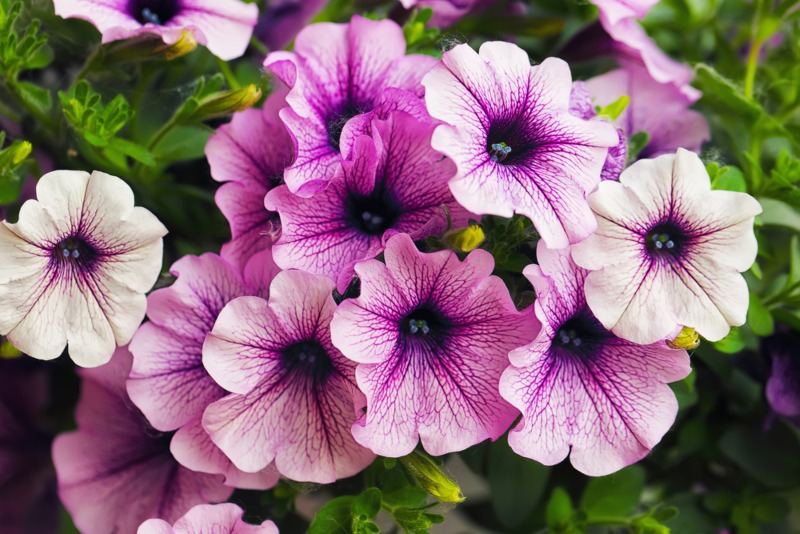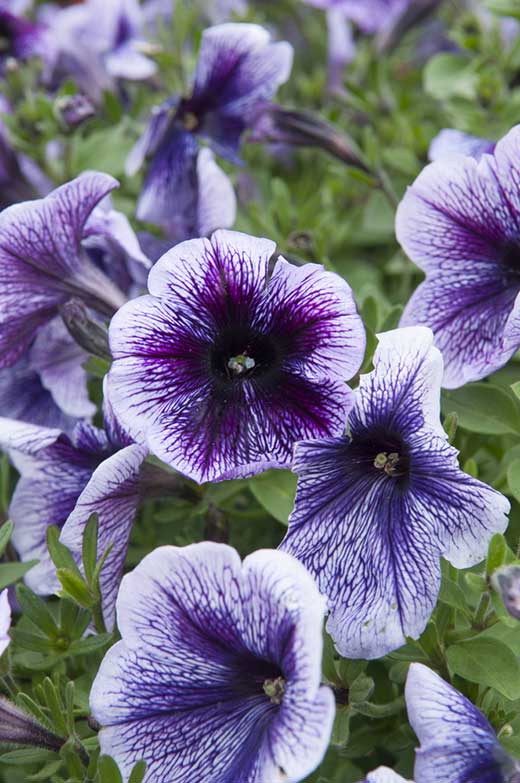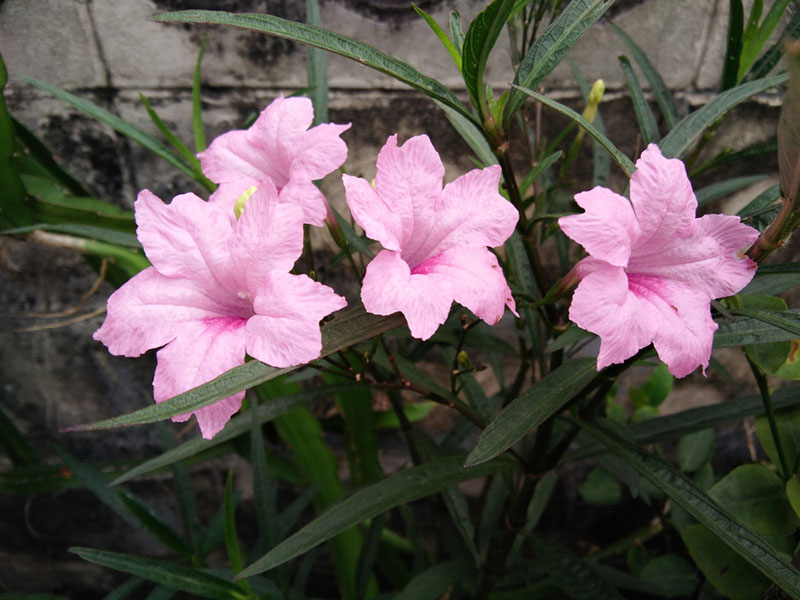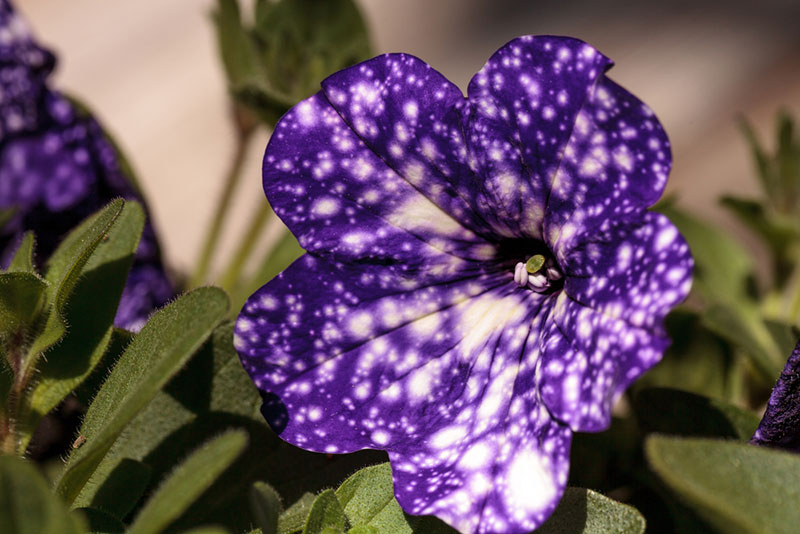
Petunias are initially from South America, and there are tons of different varieties available to plant in your landscaping.
All petunias can trace their parentage back to white-flowered Petunia axillaris and purple-flowered Petunia violacea that were first introduced into Europe in the early 1800s. These were small, lanky plants that had a minimal purpose. By the late 1800s, major seed companies were starting to sell petunias in mail-order catalogs. If it were not for the Japanese and America, these flowers would look nothing like the breathtaking options available today.
Today, you can grow beautiful petunias easily at home.
Light and Temperature Requirements
Petunias need at least six hours of sunlight daily. Petunias prefer nighttime temperatures between 57-and-75 degrees Fahrenheit and daytime temperatures between 61-and 75 degrees Fahrenheit. You can extend that range downward a little by covering your petunia beds with sheets anchored down on colder nights. Then, remove the sheets the next day as temperatures warm. If your climate routinely gets below 37 degrees, look for frost-hardy petunia hybrids.
Planting Location Tips
Petunias grow best in soil with at least 25% organic matter mixed in. If the soil is too heavy, then the petunias’ roots will not grow. Petunias are also suspectable to root rot, so make sure that the area drains well.
Watering
Potted petunias may need to be watered twice a day during the hottest part of the summer, so you need to observe them. Always water from the top of the soil or let them sit in water. Getting moisture on the leaves and flowers can cause them to get sick.

Soil
The first thing that you need to do is provide your petunias with the right growing medium. You can buy soilless growing medium for them at a nursery, or make petunia soil by combining two parts compost, two parts peat moss and one part vermiculite.
Fertilizer
Give your petunias a slow-release fertilizer when you plant them. Additionally, you should fertilize your potted petunias at least every two weeks with a 10-10-10 fertilizer. If you notice that your petunias are not producing as many flowers as you would like, then change to a fertilizer lower in nitrogen. You should also add compost to the top of the soil regularly.
Growing Petunias in Pots
Petunias make excellent potted plants. Choose a pot that drains well. The container should be big enough to allow your petunias to grow. Generally, you should not place more than three petunias in a 12-inch pot.
Once you have your petunias in the container, then choose the right location for it. Remember that petunias grow best when they get at least six hours of sun daily. If you live in a warm environment, you may need to provide some afternoon shade as petunias do not do well when temperatures reach above 75 degrees. Generally, the more sun your container gets, the more prolifically your flowers will bloom.

Growing Petunias from Seeds
While many people buy petunias in six-packs at the nursery, it is incredibly simple to grow petunias from seeds. One of the advantages of growing petunias from seed is that you can get a much wider choice of available petunia types. About 10 weeks before your last frost date:
- Fill eggshells with potting soil. You can opt to use commercial starter soil or make your own from two parts compost, two parts peat moss and one part vermiculite. If you do not have enough eggshells, then you can use a starter tray.
- Put eggshells in a flat box or starter tray.
- Sprinkle seeds on top of the soil. Be careful because petunia seeds are very tiny.
Use a spray bottle to give them moisture and cause them to go into the soil slightly. - Cover the tray and put in an area with bright light for seven-to-ten days where the temperature will stay between 70-and-85 degrees Fahrenheit. You should not put the seeds in direct sunlight.
- Once seeds sprout, remove the cover and relocate tray to an area where temperatures stay about 65 degrees Fahrenheit during the day and 55 degrees Fahrenheit at night.
- After about one week, move the plants until they are about 4 inches from a fluorescent light source. You will need to adjust the place that the petunias are sitting or raise the light source constantly to maintain the 4-inch distance as your plants grow. Give them 16-to-18 hours of light daily.
- Plant the eggshells in pots that you can put in the ground when the petunias have three true leaves.
- Fertilize the plants every two weeks with diluted plant fertilizer.
- When temperatures begin to warm up, place your plants outside during the day and bring them in at night until you are ready to put them in the ground or a pot.






